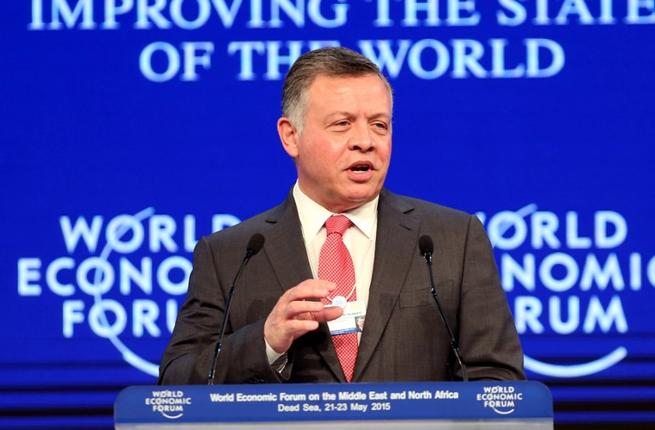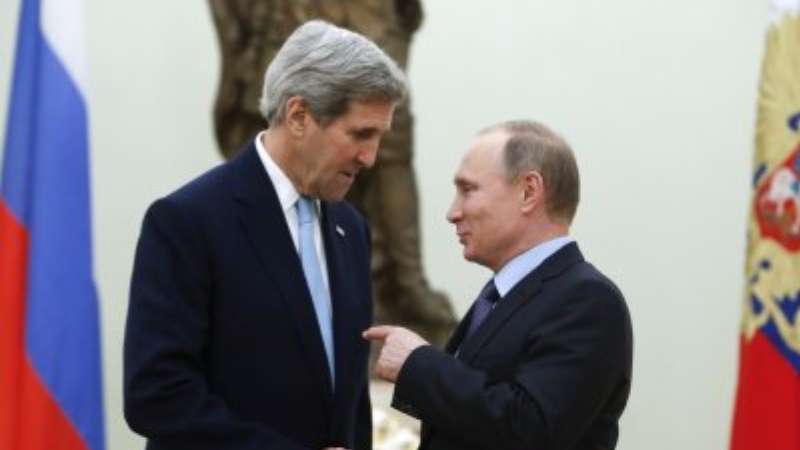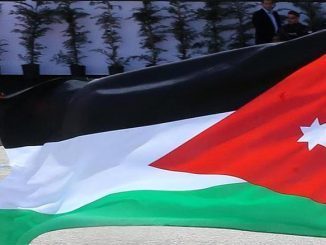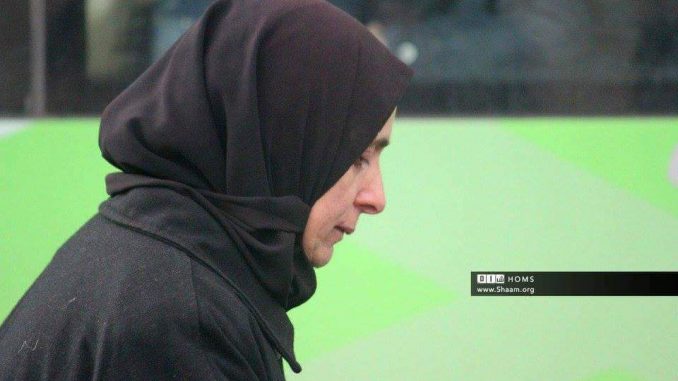
Evacuation process of the last rebel-held district in Syria’s Homs city started after a deal between Assad regime and the rebels. While the regime said only rebels and their families well leave, analysts expect tens of thousands of civilians to leave their city.
Last week, the negotiators from al-Waer besieged area had signed an agreement for rebel factions and their families to surrender and leave Homs city.
The deal follows other agreements that were never fully implemented between the government and rebel groups in al-Waer, their last bastion in Homs, which has been pounded by air strikes in recent weeks.
Both sides signed the deal according to which opposition fighters and their families who choose not to accept living under Assad regime’s control, will be forcibly displaced and head to Idlib, or Jarablus in northern Syria.
The agreement underlines Assad regime’s upper hand in the war, as more rebel fighters were forced to leave areas they have defended for years in deals that amount to negotiated withdrawals to other parts of the country
Homs, the country’s third-largest city, was once the center of the uprising against Bashar al-Assad.
Throughout the Syrian crisis, wide parts of the city were held by rebels but state forces eventually regained control of all areas except for Waer. The rebel fighters withdrew from old Homs in 2014 after two years of intensive bombardment, that left more than the third of Homs destroyed.
Waer is home to about 75,000 people and has been under a government siege since 2013, triggering shortages of medicine and occasionally food.
The UN has not been able to deliver much needed humanitarian aid to the area since September 2016.
Thanks to the world!Forced displacement,war crime
First group of convoys of evacuation left al Wa’er neigh/#Homs to Jarablus city in #Aleppo pic.twitter.com/EcJNGQQ9JZ— Raed Al Saleh (@RaedAlSaleh3) March 18, 2017
Assad enforced displacement under Int'l view: #Homs #Daraya #Moademiyeh, #Aleppo, #WBarada. #RevolutionWillWin pic.twitter.com/yzwWqzpZJe
— Zolal Habibi (@Ashrafi4ever) March 18, 2017
Displacement started
Green government buses ferried the fighters, who were carrying assault rifles, and their families from the northern Al Waer neighborhood to Homs’ western entrance, where they disembarked and had some of their bags searched under the supervision of Syrian and Russian military police.
The men, women and children, most of them carrying their belongings in suitcases and plastic bags, then boarded white buses that were to take them to the northern rebel-held town of Jarablous on the border with Turkey. The evacuees were assisted by Syrian Arab Red Crescent members as they put their belongings in the buses.
Talal Barazi, the Homs governor, told Reuters news agency that about 1,500 people would depart for Aleppo’s countryside on Saturday, including at least 400 fighters.
Russian and Syrian forces were overseeing the evacuation, and the full departure of rebels from Al Waer would take about six weeks, he said.
“The preparations and the reality on the ground indicate that things will go well,” Barazi said.
Damascus describes such deals as a good way of bringing the country closer to peace after six years of conflict. But the opposition describes them as a tactic of forcibly displacing people who oppose Assad after years of bombardment and siege.
“There is a delibrate strategy from the Syrian government in terms of retaking some of these areas is that they lay a siege on the area preventing all kinds of supplies from getting in, including food, medical supplies etc and then they indiscriminately attack these areas,” the deputy director of emergencies at Human Rights Watch, Ole Solvang, said.
“Aleppo was perhaps the most egregious example of that but we’ve seen it in many other places as well, so one of the major concerns HRW has is about these deals and the way they come about.”
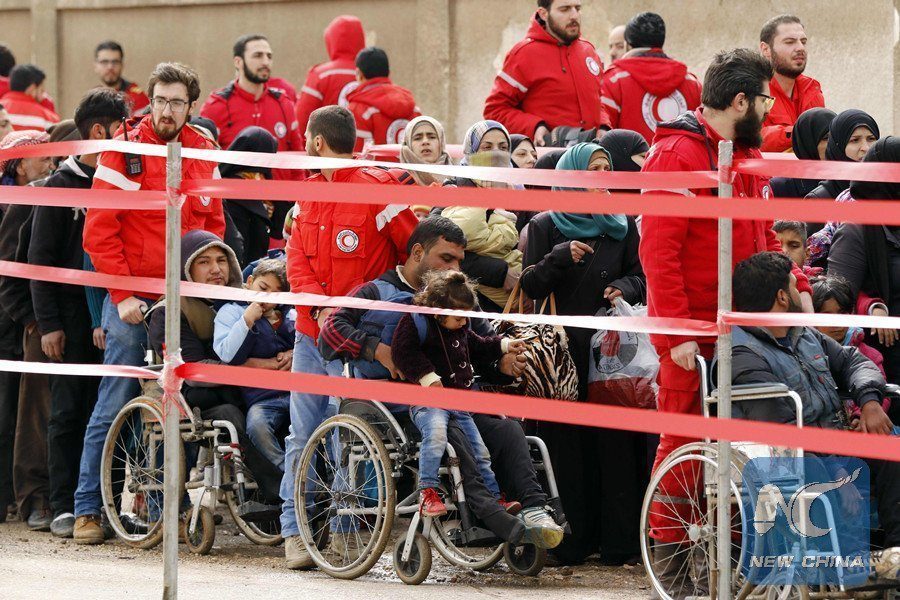
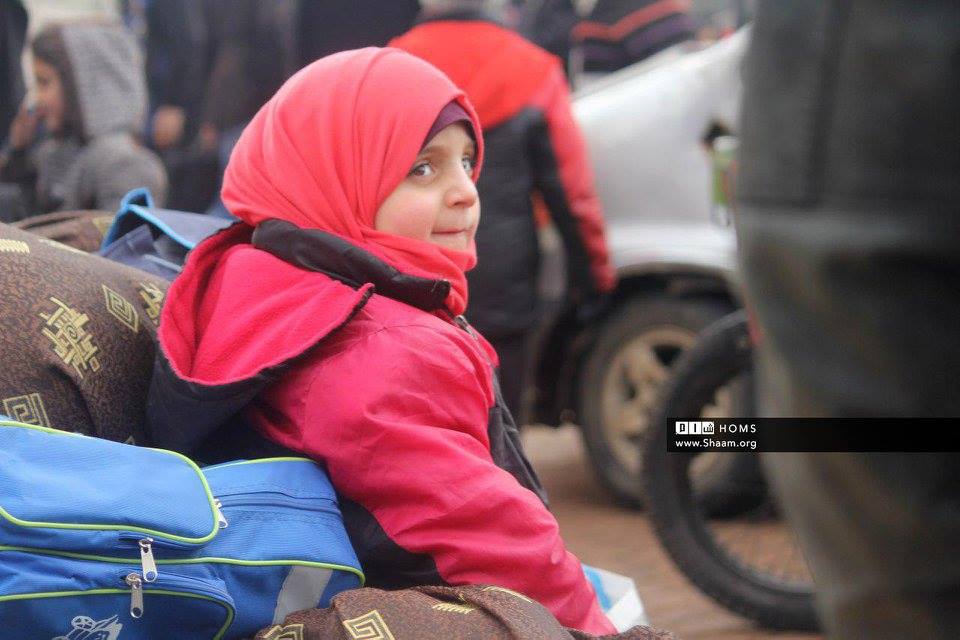
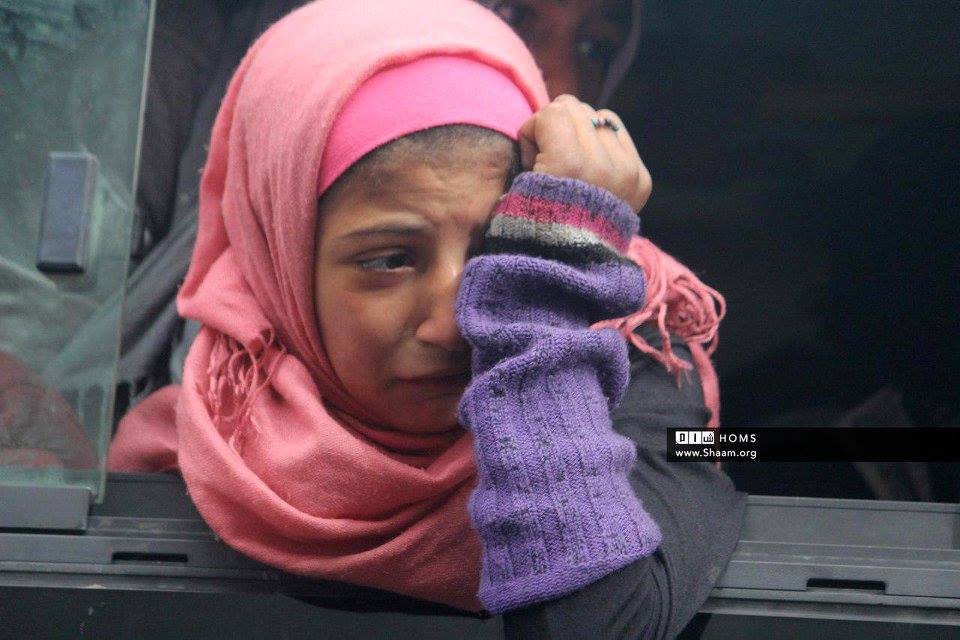

Tens of thousands to leave
Barazi said there was communication with other rebel-held areas north of Homs city to reach similar deals, including the towns of al-Rastan and Talbiseh.
“We are optimistic that the full exit of armed (fighters) from this district will pave the way for other reconciliations and settlements,” he said.
Broadcasting live from the al-Waer departure area, Syrian state television spoke to a Russian colonel, who said via an interpreter that security would soon return to the district.
“This agreement was reached only under the patronage of the Russian side … and it will be implemented with Russian guarantees,” he said.
The Syrian Observatory for Human Rights, a Britain-based war monitor, said the buses would go to the Jarablus area held by Turkey-backed rebels in the northern Aleppo countryside.
Once completed, it would mark the biggest evacuation during the war out of one Syrian district, which is home to about 40,000 civilians and more than 2,500 fighters, the monitoring group said.
“It’s because there is zero trust in Assad’s government. That’s why the numbers are high,” said the head of the Homs Media Center, run by opposition activists. “For years, it has besieged us…and bombed people’s homes.”
Many did not want to stay out of fear of arrest, and around 15,000 people had signed up to evacuate so far, he said.
“People are going to live in tents, in refugee camps,” the activist said, adding that he also planned to leave in the coming weeks. “They are willing to leave their homes, their land, towards the unknown.”
Opposition activist Bebars al-Talawy said the agreement was signed Monday, adding a committee will be formed to prepare the lists of names of those who want to leave.
“People are happy that they will get rid of the siege, but sad because they will leave Homs,” Talawy said.
Opposition sources added that those who choose to stay in al-Waer will have to accept settlement and Assad regime might take any procedures against them including detention or draft to compulsory military service, for males, Osama Abu Zeid, head of Homs Media Center said.
The guarantor for the deal was the Russian side who is trying to impose its influence and presence on the ground. However, there were no real guarantees given to al-Waer residents by the Russians or Assad regime, Abu Zeid also said.
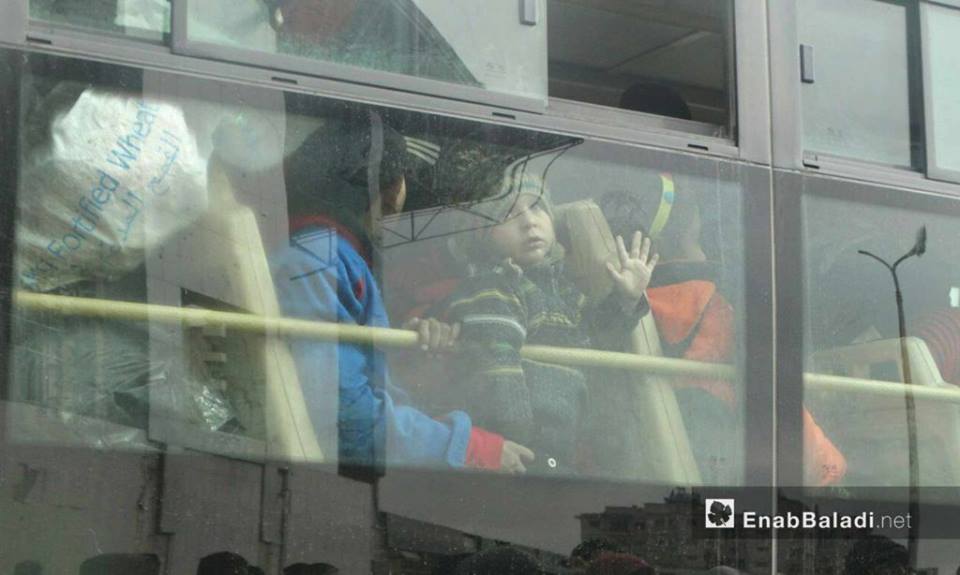
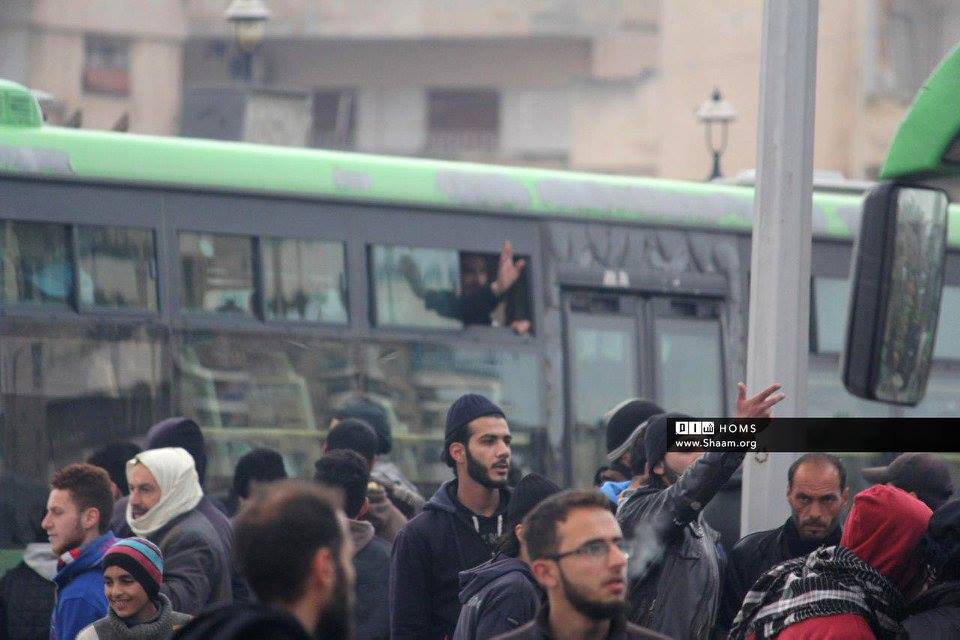
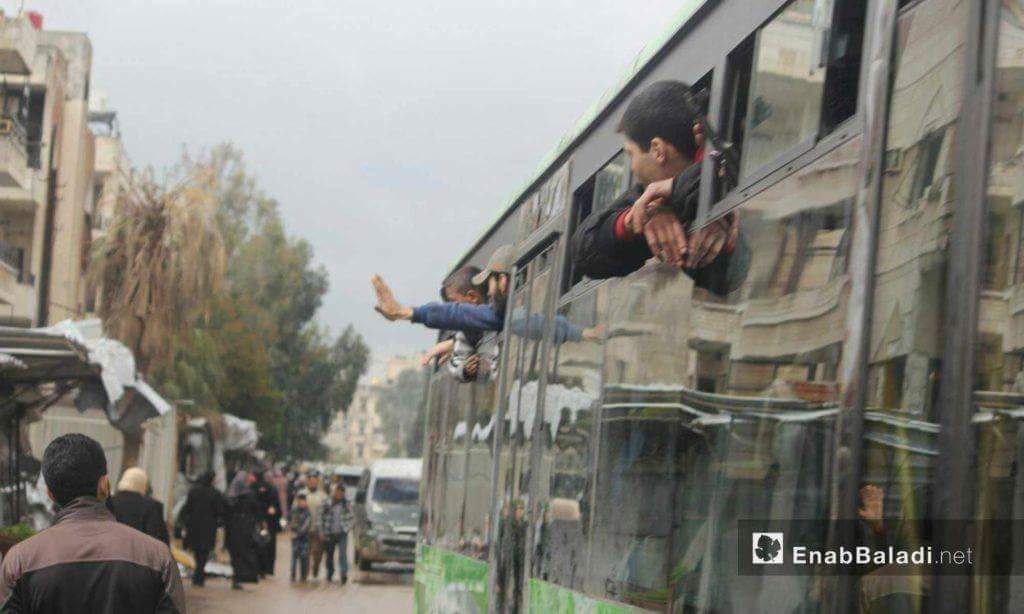
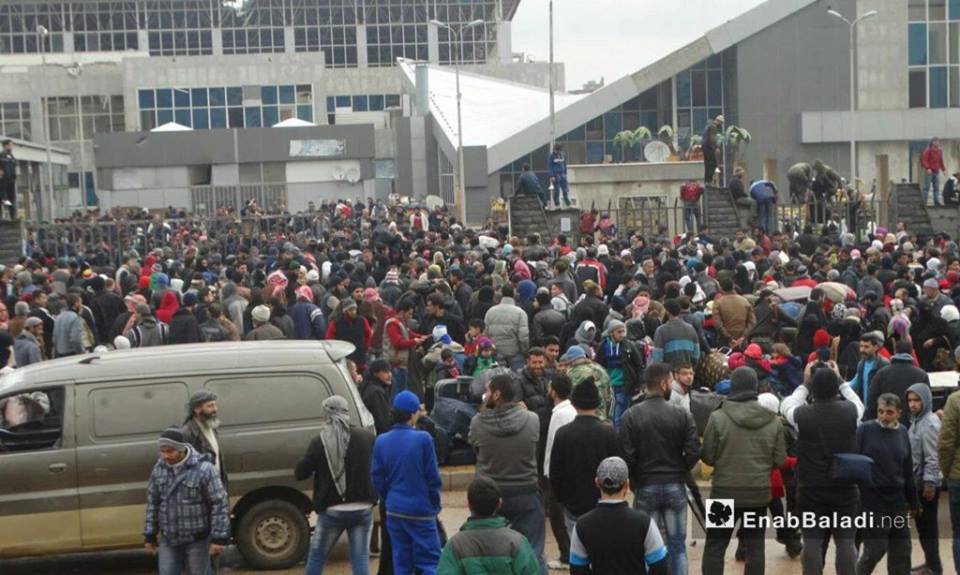
Local “reconciliation” agreements are “the solution”
When asked about the solution he imagines, Assad said that it involves fighting who he called as terrorists, while seeking dialogue through “reconciliation agreements” with those who decide to return to the “government’s amnesty.”
“You need to have two parallel ways: the first one is to fight the terrorists, and this is our duty as government, to defend the Syrians and use any means in order to destroy the terrorists who’ve been killing and destroying in Syria. The second one is to make a dialogue. This dialogue has many different aspects” Assad said.
“You have the political part, which is related to the future of Syria; what political system do you need, what kind? It doesn’t matter which one, it depends on the Syrians, and they’re going to have referendum about what they want. The second part is to try to bring many of those people who were affiliated to the terrorists or who committed any terrorist acts to go back to their normality and lay down their armaments and to live normal life in return for amnesty that has been offered by the government, and we’ve been going in that direction for three years, and it worked very well,” Assad added.
“So, actually, if you want to talk about the real political solution since the beginning of the crisis, of the war on Syria, till this moment, the only solution was those reconciliations between the government and the different militants in Syria, many of them joined the government now, and they are fighting with the government. Some of them laid down their.”
Assad regime forces, helped by Russian air power and Iran-backed Shiite militias, has steadily ended armed opposition influence in the remaining pockets of resistance around the capital, in addition to many areas in Syria, using a series of army offensives and evacuation agreements, after years of siege, starvation, and daily bombing.
Assad regime describes the evacuation deals as “reconciliation” or “settlement agreements”, but rebels say they involve the forcible displacement of whole communities from opposition areas after years of siege and bombardment.
The Syrian crisis began as a peaceful demonstration against the injustice in Syria. Assad regime used to fire power and violence against the civilians and led to armed resistance. 450.000 Syrians lost their lives in the past five years according to UN estimates, and more than 12 million have lost their homes.

